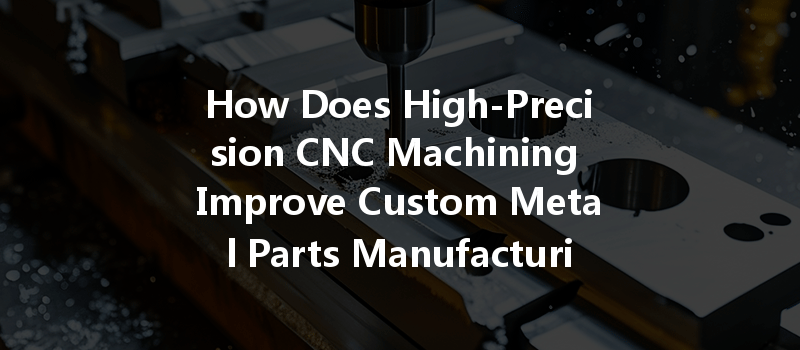Did you know that high-precision CNC machining can achieve tolerances as tight as 0.001 inches? This astounding capability has transformed the manufacturing landscape, particularly in industries where precision and reliability are non-negotiable. As technology continues to evolve, the demand for custom metal parts using high-precision CNC machining is only set to increase. In this blog, we will delve into how high-precision CNC machining enhances the manufacturing of custom metal parts, explore detailed solutions for common challenges, and examine the nuances of this vital technique in modern production.
Understanding High-Precision CNC Machining
CNC (Computer Numerical Control) machining is an advanced manufacturing process that utilizes computers to control machine tools. High-precision CNC machining specifically focuses on creating parts with extremely tight tolerances and excellent surface finishes. This technology is used across various industries, from aerospace and medical devices to automotive and electronics.
When we talk about high-precision CNC machining, we consider several key features:
Why Precision Matters in Custom Metal Parts Manufacturing
Precision is crucial in custom metal parts manufacturing for several reasons:
The Challenges of Custom Metal Parts Manufacturing
While CNC machining offers numerous advantages, there are challenges that manufacturers often encounter, including:
Solutions to Common Challenges
Addressing the challenges of high-precision CNC machining requires a multifaceted approach. Here are strategies to consider for overcoming these hurdles:

Real-World Applications of High-Precision CNC Machining
To appreciate the impact of high-precision CNC machining, consider how various industries apply this technology:
Aerospace Industry
The aerospace sector demands the highest precision. Components such as turbine blades and landing gear require ultra-tight tolerances to ensure safe flight. CNC machining is instrumental in crafting these components, with advanced techniques such as electron beam melting enabling manufacturers to create parts that are not only lightweight but also incredibly strong.
Medical Devices
In the medical field, devices such as surgical instruments and implants must meet stringent quality standards. High-precision CNC machining allows for the production of parts that are both accurate and compliant with regulatory requirements.
Automotive Industry
The automotive sector relies on high-precision parts for both performance and safety. From engine components to electronic housings, the precision of these parts ensures optimal functionality and longevity.
Electronics
For the electronics industry, high precision is essential for creating circuit boards and housings that fit snugly together. Any misalignment or inaccuracy can lead to device failure, making precision machining critical.
The Future of High-Precision CNC Machining
Looking ahead, the realm of high-precision CNC machining is set to evolve further. Here are some anticipated trends:
The integration of AI into CNC machining promises to optimize operations, reduce human error, and enhance predictive maintenance, thereby improving overall efficiency and precision.
Combining CNC machining with additive manufacturing will allow for more complex geometries and lighter parts without compromising on strength or durability.
As environmental concerns rise, more companies will look for ways to implement sustainable machining practices, such as using eco-friendly materials and minimizing waste through advanced techniques.
The discovery and engineering of new materials will broaden the scope of what can be achieved with CNC machining, especially in high-tech industries.
High-precision CNC machining is revolutionizing the manufacturing of custom metal parts, proving indispensable across numerous industries. This technology not only enhances performance and safety but also aligns with modern demands for efficiency and sustainability. Understanding and addressing the challenges of custom parts manufacturing, from material selection to complex designs, equips manufacturers with the necessary tools to succeed in an increasingly competitive marketplace.
By investing in high-precision CNC machining, companies can ensure their operations are not only viable but also primed for future advances. As we look to the future, embracing these techniques will be vital for those seeking innovation and excellence in manufacturing.
This blog serves as a comprehensive guide for both manufacturers and businesses looking to thrive in the era of high-precision CNC machining. By grasping its significance, you are well-equipped to make informed decisions about your manufacturing processes, ensuring sustained success in the long run.






